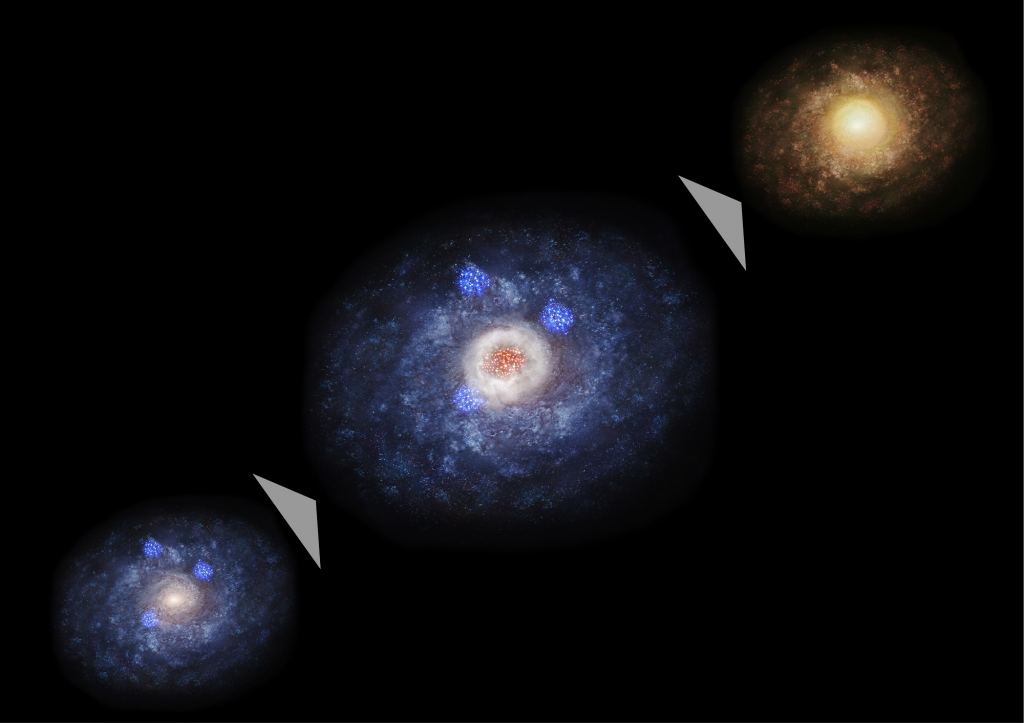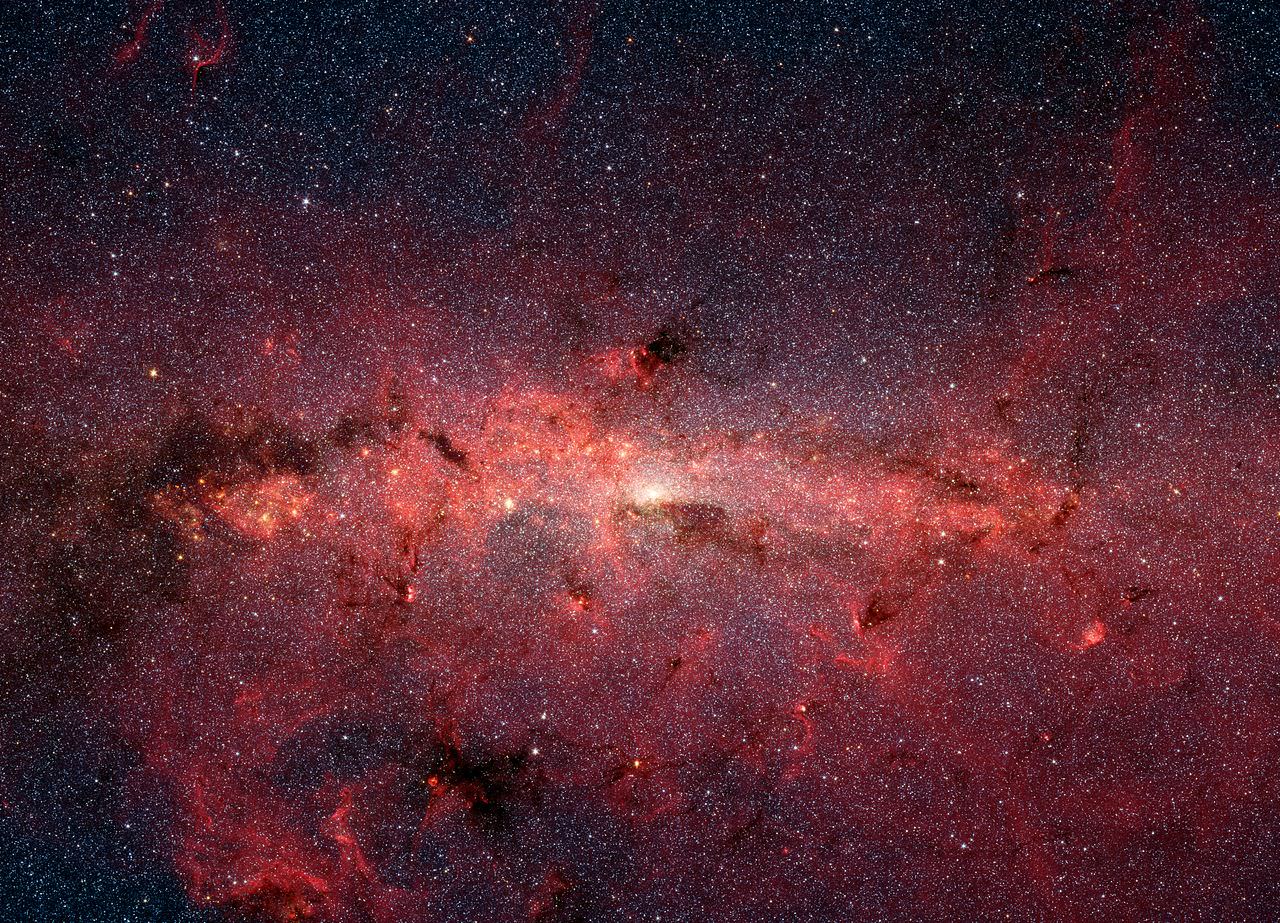Scientists have speculated that given the sheer number of galaxies in our Universe – modern estimates are as high as 2 trillion – that there must be infinite opportunities for life to emerge. It has also been theorized that galaxies (like stars) have habitable zones, where star systems located too close to the core or too far out in the spiral arms will be exposed to too much radiation for life to emerge.
But are certain types of galaxies more likely to produce intelligent life? Not that long ago, scientists believed that giant elliptical galaxies – which are substantially larger than spiral galaxies (like the Milky Way) – are a far more likely place to find advanced civilizations. But according to new research from the University of Arkansas, these galaxies may not be the cradles of civilization they were previously thought to be.
To put it plainly, elliptical galaxies account for 10 to 15% of all galaxies in our corner of the Universe (the Virgo Supercluster). They are so-named because of their ellipsoid profile and are typically comprised of very old and/or low-mass stars (M-type red dwarfs). Combined with a low rate of star formation, this makes them dim in comparison to spiral galaxies.
The largest galaxies are typically giant ellipticals, which contain upwards of a trillion stars and can measure as much as one million light-years in diameter – 10 times as large as the Milky Way. Based on a threefold set of criteria, a team of researchers prosposed in a 2015 study that these galaxies were the best place to look for evidence of extraterrestrial intelligence (ETI).
First, there is the total number of stars in a galaxy that are capable of hosting planets. Second, there’s the availability of the chemical elements necessary for life, such as carbon, oxygen, and iron – which is more likely where older stars exist. Third, there is the rate of supernova explosions, which release powerful radiation that can inhibit the formation and evolution of complex life on nearby planets.
Using data obtained by the Sloan Digital Sky Survey of more than 150,000 nearby galaxies, the team created a cosmological model to assess the potential habitability of certain types of galaxies. What they determined was that metal-rich elliptical galaxies (but have one-tenth the star formation rate) could potentially host ten thousand times as many habitable planets as the Milky Way.
Because of this, they are statistically much more likely to be “cradles of civilization.” But according to Daniel Whitmire, a retired professor of astrophysics and instructor at the University of Arkansas, the 2015 study and the resulting model contradicts the statistical rule known as the principle of mediocrity (aka. the Copernican Principle).
This principle states that in lieu of evidence to the contrary, an object or some property of an object should be considered typical of its class (rather than atypical). As Whitmer said in a University of Arkansas news statement:
“The 2015 paper had a serious problem with the principle of mediocrity. In other words, why don’t we find ourselves living in a large elliptical galaxy? To me this raised a red flag. Any time you find yourself as an outlier, i.e. atypical, then that is a problem for the principle of mediocrity.”
In accordance with the Copernican Principle, Earth and human civilization should be considered typical of habitable planets and technological civilizations elsewhere in the Universe – i.e. located in a spiral galaxy between the core and the arms. But the 2015 study suggests the opposite, that most habitable planets would be located in a type of galaxy other than our own.
In his own paper, which recently appeared in The Monthly Journal of the Royal Astronomical Society, Whitmire proposes two reasons why large elliptical galaxies may not be such a good bet for ETIs. In one scenario, elliptical galaxies experience massive galactic sterilization events as a result of quasar activity and supernovae that occurred when the galaxies were smaller and more compact.

In the other, the generally-higher metallicity of large elliptical galaxies is likely to result in a disproportionately higher number of gaseous planets in large elliptical galaxies – meaning less rocky (aka. “Earth-like”) planets. As Whitmire said:
“The evolution of elliptical galaxies is totally different than the Milky Way. These galaxies went through an early phase in which there is so much radiation that it would just completely have nuked any habitable planets in the galaxy and subsequently the star formation rate, and thus any new planets, went to essentially zero. There are no new stars forming and all the old stars have been irradiated and sterilized.“
This study is similar to research conducted in recent years that have reconsidered questions relating to planetary habitability. Instead of using present-day Earth as a template, scientists have recommended factoring in how Earth’s environment (and its lifeforms) evolved over time. While Earth has a relatively warm and oxygen/nitrogen-rich atmosphere today, it was a very different place when life first emerged.
You might think this is bad news, but from a SETI standpoint, it’s actually encouraging. While this study casts doubt on giant elliptical galaxies being the best place to look for intelligent life, it means that SETI efforts are best directed at our own galaxy and those like it. And according to data from SDSS, spiral galaxies are much more common, accounting for 77% of galaxies in the known Universe.
Now if we could just find some evidence of that statistically more-likely life, we’d be in business!
Further Reading: University of Arkansas, MNRAS


“Sandberg didn’t love the new study. For this theory to work, he said, mass extinction sterilization events in young ellipticals must be so devastating that they wipe out a planet’s habitable potential for all time.
“That seems to be a rather tall order, and I have a hard time imagining an environment so effective at sterilization,” he told Gizmodo. “Same thing for the gas planet migration. Sure, there could be a lot more gas planets, but so many that less than one Earth in 10,000 escapes?” To which he added: “These kinds of arguments [i.e. Principle of Mediocrity] are tricky to get to work right, and are nearly always trumped by any kind of data. So we need to get more data.””
[ https://gizmodo.com/research-casts-doubt-on-elliptical-galaxies-being-cradl-1843203569 ]
Like Sandberg I didn’t love the new Whitmire study for reasons that he mention, but unlike him I loved the 2015 Dayal study. The latter did look back further than Sun is old and even saw some indications the “fundamental metallicity relation” that tracks the entire formation history of galaxies works over many mergers.
But both Whitmire and Sandberg overlook the fact that the 2015 paper included gas giant densities since they may host moons that could be habitable. In this case the philosophical mediocrity principle breaks bayesian priors of uniform likelihood if such moons exist, and in general it doesn’t tell us what to factor in. We don’t know if plate tectonics is important for long term habitability, say. Another problem with Whitmire’s paper is that it slips out of considering why life likely is common since it started so early here by making similar tall orders as for sterilization, while he should consider only the rare biospheres with language capable species.
In the end the paper concentrated on a likelihood that was 1 %, which it considers “not highly significant”. I’m not sure it supports throwing out bayesian and selection bias statistics to replace it with cherry picking of factors to humor an old philosophical idea how sampling under bias works.